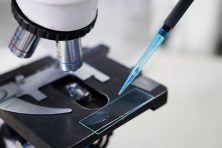IVF Pregnancy Test: When and How to Take It for Accurate Results

Taking a pregnancy test after IVF requires careful timing for accurate results. Testing too early can lead to false negatives or positives due to lingering fertility medications. This article covers when and how to test, the differences between home and blood tests, and how to interpret positive or negative results. Understanding these factors will help you navigate this crucial step in your IVF journey with confidence.
Understanding the IVF Pregnancy Test
For individuals undergoing IVF treatment, the pregnancy test is a crucial milestone in the journey toward conception. Unlike natural conception, where pregnancy can occur unpredictably, IVF follows a structured process that includes embryo transfer, hormonal support, and a carefully timed pregnancy test.
The IVF pregnancy test differs slightly from standard home pregnancy tests because of the medications used during treatment, which can sometimes influence results. Understanding how these tests work and when to take them is essential for obtaining an accurate outcome.
How Does an IVF Pregnancy Test Work?
IVF pregnancy tests, whether done at home or in a clinical setting, work by detecting the pregnancy hormone hCG (human chorionic gonadotropin) in either urine or blood.
Embryo Implantation and hCG Production
After embryo transfer, the embryo must implant in the uterine lining for pregnancy to occur. Once implantation happens, the developing placenta begins producing hCG—the hormone that signals pregnancy. hCG levels double approximately every 48–72 hours in early pregnancy.
Detecting hCG in a Pregnancy Test
Urine tests detect hCG in urine using test strips or digital readers. On the other hand, blood tests measure the exact concentration of hCG in the bloodstream, making them more sensitive and accurate than urine tests.
The Role of IVF Medications
Many fertility medications (such as Ovitrelle® and Pregnyl®) contain synthetic hCG, which can linger in the body for up to 14 days. This means taking a pregnancy test too early may result in a false positive due to residual hCG from the trigger shot. Conversely, testing too early may also lead to a false negative, as hCG levels may not yet be high enough for detection.
Home Pregnancy Tests After IVF: How to Get Reliable Results
How to Take a Home Pregnancy Test After IVF
Taking a home pregnancy test after IVF requires proper timing and technique to ensure reliable results. Follow these step-by-step instructions:
Step 1: Select a Reliable Home Pregnancy Test
Not all tests are the same—choose wisely:
-
Look for a high-sensitivity test (detecting 25 mIU/ml hCG or lower).
-
Digital tests minimize interpretation errors.
-
Stick to trusted brands with strong clinical performance.
Step 2: Test at the Right Time
Timing is key:
-
Wait at least 12-14 days after embryo transfer to avoid false negatives.
-
If you used an hCG trigger shot, wait at least 14 days to prevent a false positive.
-
For frozen embryo transfers (FET), follow your fertility clinic’s recommended timeline.
Step 3: Collect Your Urine Sample Properly
To improve accuracy:
-
Use first-morning urine, which is more concentrated in hCG.
-
Either urinate directly on the test stick or collect urine in a clean container.
-
Avoid excessive fluid intake before testing—it can dilute hCG levels.
Step 4: Follow the Test Instructions
Each brand has specific guidelines:
-
Read the instructions carefully before starting.
-
Follow the recommended waiting time before checking the result.
-
Place the test on a flat surface while waiting.
Step 5: Interpret the Results Correctly
-
Digital tests display results clearly as “Pregnant” or “Not Pregnant.”
-
Line-based tests require careful interpretation—a faint line can still indicate pregnancy.
-
If unsure, wait 48 hours and retest—hCG levels should rise if pregnant.
Step 6: Confirm with a Blood Test If Necessary
If your test is positive, your fertility specialist may recommend:
-
hCG blood test for accurate hormone measurement.
-
Ultrasound scan around 7 weeks to confirm implantation and detect a heartbeat.
If your test is negative, consult your fertility clinic before stopping medications, as false negatives can still occur if tested too early.
Common Mistakes to Avoid When Taking a Pregnancy Test
While home pregnancy tests are widely available, studies show real-world accuracy is often lower than claimed, especially when used incorrectly.
Here are key mistakes to avoid:
1. Testing Too Early
Many tests advertise early detection (8-10 days post-embryo transfer), but this is often unreliable:
-
hCG levels vary between individuals, leading to false negatives.
-
The 2-week wait after embryo transfer ensures better accuracy.
2. Misreading the Test Result
-
Line-based tests can be confusing—faint lines may still indicate pregnancy.
-
Digital tests eliminate misinterpretation by displaying clear results.
3. Using an Inaccurate or Low-Sensitivity Test
Not all tests deliver on their claims:
-
Some brands do not detect hCG at the promised levels.
-
A UK study found that 4 out of 7 brands failed to meet their 99% accuracy claims (Gnoth, C., & Johnson, S., 2014)
-
Choose tests with a proven track record in clinical settings.
4. External Factors That Can Skew Results
-
Drinking too much liquid before testing can dilute hCG levels.
-
Testing at different times of the day can lead to inconsistent results—morning testing is best.
-
Certain medications or medical conditions (like PCOS or fertility drugs containing hCG) can cause false positives.
Blood Tests vs. Home Pregnancy Tests: Which is More Reliable?
While home pregnancy tests provide a quick and convenient way to test for pregnancy, blood tests conducted at a fertility clinic or through the NHS offer greater accuracy.
| Home Pregnancy Tests | Blood Pregnancy Tests (hCG Blood Test) | |
| Pros | Convenient & private Can be done at home Results within minutes | More sensitive & accurate Detects pregnancy earlier than urine tests Measures the exact level of hCG hormone |
| Cons | False negatives are possible if taken too early Some brands have questionable accuracy | Requires a clinic visit Takes longer to receive results |
A blood test measures hCG levels in the blood, making it more reliable than a urine-based test, particularly in early pregnancy. Many UK fertility clinics and NHS Foundation Trusts offer hCG blood tests 8 to 10 days after embryo transfer to confirm pregnancy.
Understanding Pregnancy Test Results After IVF
After an IVF embryo transfer, a pregnancy test detects hCG to confirm implantation. However, factors like timing, test sensitivity, and IVF medications can impact results. A blood test at your clinic is the most reliable method, as home pregnancy tests may not always provide an accurate reading. Whether your result is positive or negative, follow-up testing is crucial to confirm the outcome.
What a Positive Pregnancy Test Means After IVF
A positive test indicates that implantation has occurred, but pregnancy viability depends on rising hCG levels. Your clinic will likely schedule a blood test within 48 hours to track hCG progression. If levels double as expected, an ultrasound at 6-7 weeks will confirm the pregnancy. However, chemical pregnancies or ectopic pregnancies can sometimes cause an initial positive test, making medical follow-ups essential.
What to Do If Your Pregnancy Test is Negative
A negative test doesn’t always mean pregnancy hasn’t occurred. Testing too early may result in a false negative, so waiting a few more days before retesting is recommended. If the result remains negative and your period starts, implantation likely did not occur. Your fertility clinic will discuss next steps, whether that means adjusting treatment, considering another cycle, or exploring new options. Emotional support is key, as multiple IVF cycles are often needed for success.
False Negative Pregnancy Tests After IVF: What You Need to Know
False negatives can happen due to low hCG levels, late implantation, diluted urine, or using a low-sensitivity test. If you suspect a false negative, retest in 48 hours with first-morning urine or schedule a blood test at your clinic. If your period hasn’t started but tests remain negative, consult your specialist to rule out delayed implantation or an ectopic pregnancy.
How Ovoria Can Support Your IVF Journey
At Ovoria, we are dedicated to helping UK patients navigate their IVF journey with confidence and clarity. Through our trusted partnerships with leading UK fertility clinics, we provide access to high-quality egg donation services and personalized fertility support tailored to your unique needs.
Our team is here to help. Contact us today to speak with a fertility specialist and take the next step toward growing your family.
Frequently Asked Questions
How soon can I take a pregnancy test after a 5-day IVF transfer?
It is recommended to take a pregnancy test 10–14 days after a 5-day embryo transfer. Testing earlier may lead to false negatives since hCG levels might not be detectable yet. Always follow your fertility clinic’s advice for accurate results.
After an IVF pregnancy test is positive, what happens next?
If your pregnancy test is positive, your fertility clinic will likely schedule an hCG blood test to confirm rising hormone levels. Around 6-7 weeks, an ultrasound scan will be done to check for a gestational sac, fetal heartbeat, and embryo development.
When should I take a pregnancy test after IVF?
A home pregnancy test should be taken 12-14 days after embryo transfer, but a blood test (beta-hCG test) at your fertility clinic provides the most reliable confirmation. Testing too early may result in a false negative due to low hCG levels.
References
Gnoth, C., & Johnson, S. (2014). Strips of Hope: Accuracy of home pregnancy tests and new developments. Geburtshilfe Und Frauenheilkunde, 74(07), 661–669. https://doi.org/10.1055/s-0034-1368589
Boxer, J., Weddell, S., Broomhead, D., Hogg, C., & Johnson, S. (2019). Home pregnancy tests in the hands of the intended user. Journal of Immunoassay and Immunochemistry, 40(6), 642–652. https://doi.org/10.1080/15321819.2019.1671861




